Reviews
Das wandernde Bild
Fritz Lang
Germany, 1920
Credits
Review by Cullen Gallagher
Posted on 07 March 2014
Source Kino DVD
Categories Silent Lang
Watching The Wandering Shadow, the third earliest surviving film by Fritz Lang, we are confronted by crucial questions that determine how we see, interpret, contextualize, and ultimately evaluate the film. What do we look for in the early works of an auteur? Are we excavating the image for traces of what would come later, be it a theme, motif, visual style, or other hallmark that distinguishes the work as his own? Should we even consider such an early effort part of the auteur’s body of work, or should that distinction be reserved for some special cinematic moment when a director becomes a master of his craft? Such questions are of vital concern to The Wandering Shadow, a film whose value in history is determined by the celebrated career of its director but whose qualities are not emblematic of its remainder.
The Wandering Shadow is arguably Lang’s least characteristic offering. This is not a sci-fi spectacular like Metropolis or Woman in the Moon, or a serial-esque caper like The Spiders or Dr. Mabuse: The Gambler, or even something mystical like Die Nibelungen or Destiny. Instead, it is a melodrama concerning a woman who falsifies her marriage certificate because her partner does not believe in wedlock. When her partner goes missing and is presumed dead, the widow flees into the mountains. Giving chase is her deceased husband’s relative who is determined to get the inheritance of which he feels he has been cheated. Seeking refuge with a mysterious mountain man, the rightful inheritor of the estate falls into even more confusion when the woman realizes her rescuer is none other than her husband.
While later Lang films do deal with the legal system - Fury is an expose of lynch mobs, while Beyond a Reasonable Doubt deals with a writer who deliberately frames himself for a murder charge to aid his crusade against capital punishment - the drama here is less focused on constitutional concerns than it is on histrionic expression. The narrative seems uninterested in the conflicting philosophies of its protagonists, or the vagaries of estate laws. Instead, the film is preoccupied with the exposition of its story and its nonlinear timeline. Beginning with a train chase as the woman makes her escape from civilization into nature, the narrative periodically goes back in time to provide the backstory of the characters and the motivations that have lead them to their current predicament. While the structure might not be so obvious, its sentiment is rather one-dimensional and doesn’t offer much with which to engage.
The film’s visuals are its strongest assets, and there are certainly some connections, however tenuous, to Lang’s other films. Unlike the shadowy, studio-bound sets of his American noir pictures like Scarlet Street and The Woman in the Window, The Wandering Shadow is notable for its outdoor photography. Stories such as this, set in the mountains, were so popular in Germany at the time that they constituted a genre, “bergfilme” (“mountain film”). (Other examples include Arnold Fanck and G.W. Pabst’s The White Hell of Pitz Palu and Leni Riefenstahl’s The Blue Light.) Lang’s mountain photography, like the paintings of Caspar David Friedrich, have a distinctly mystical flavor to them, so much so they almost seem set in a time apart from the modern segments of the story. This metaphysical, almost supernatural quality foreshadows Lang’s turn towards the fantastic in Die Nibelungen and Destiny. This abandonment of reality would reach its pinnacle with Metropolis and Woman on the Moon. While Lang would work with more realistic environments for the rest of his career, his never fully estranged himself from fantasy. His noir films and his westerns often exhibit anti-realist qualities, whether it is the overt artificiality of Rancho Notorious, the swashbuckling sweep of Moonfleet, the gothic nightmare of House by the River, or the exotic adventure of The Indian Tomb, his final film (which, coincidentally, is a remake of a serial he worked on as a writer at the start of his career).
In reference to the questions posed at the beginning of the review, The Wandering Shadow shows how a film might not fit comfortably or cohesively into a filmmaker’s body of work, but still contribute to the growth and development of his own personal artistry.
More Silent Lang
-
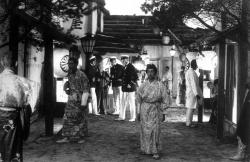
Harakiri
1919 -
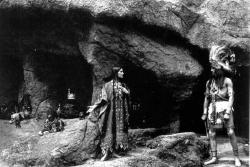
The Spiders
1919 -
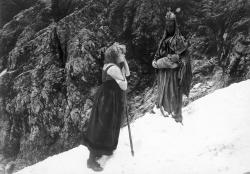
The Wandering Shadow
1920 -
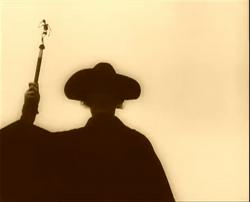
Destiny
1921 -

Four Around the Woman
1921 -
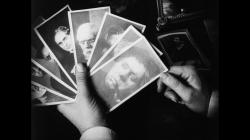
Dr. Mabuse the Gambler
1922 -
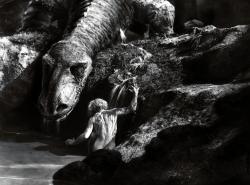
Die Nibelungen
1924 -

Metropolis
1927 -
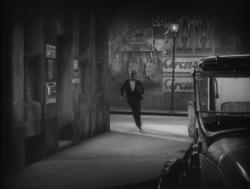
Spies
1928 -
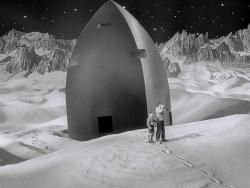
Woman in the Moon
1929
We don’t do comments anymore, but you may contact us here or find us on Twitter or Facebook.



